Explore Mbombela - South Africa Travel, Africa
Mbombela (previously known as Nelspruit) is a lively city in Mpumalanga, South Africa, that acts as a gateway to some of the country's most breathtaking natural treasures, including the well-known Kruger National Park. Known for its lush subtropical landscape, Mbombela draws travelers with its unique blend of wildlife, culture, and history. Whether you're seeking adventure or looking to immerse yourself in local traditions, this city offers an unforgettable experience.
Population: Approximately 820,000 in 2022.
Economy: Mbombela's economy majors in tourism, agriculture, and trade. It benefits from its proximity to Kruger National Park, thriving with local markets, retail, and services that support the region’s growth
Landmarks: Famous for the Lowveld National Botanical Garden, Kruger National Park, and Sudwala Caves.
South Africa
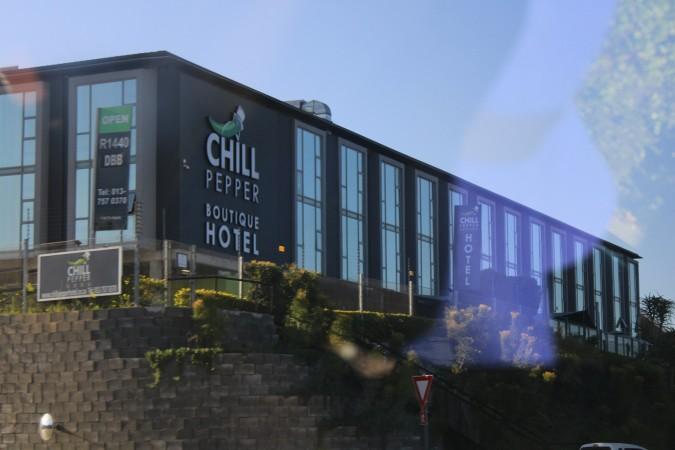
Overview of Mbombela
History & Cultural Influence
Mbombela’s history is deeply tied to the region’s indigenous peoples and European settlers. Initially a small farming town, it grew into a significant hub due to its location along the main route connecting Johannesburg to Mozambique. The city has retained its colonial roots while embracing the vibrant Swazi and Zulu cultures that influence the daily life of its people. You’ll notice this cultural fusion in local architecture, language, and traditions. The cultural heritage of Mbombela reflects a South Africa that is proud of its heritage while constantly evolving. Traditional Swazi customs, such as song and dance, often feature prominently during local festivals, offering visitors a window into the soul of this unique community.
Interaction with the Locals
Mbombela has a population of approximately 820,000 residents. The city is a melting pot of cultures, with the majority of the population being Swazi, along with Zulu, Afrikaner, and other ethnic groups. English, Swazi, and Afrikaans are widely spoken, reflecting the area's diverse heritage. The people of Mbombela are known for their warm hospitality, making it a welcoming destination for travelers.
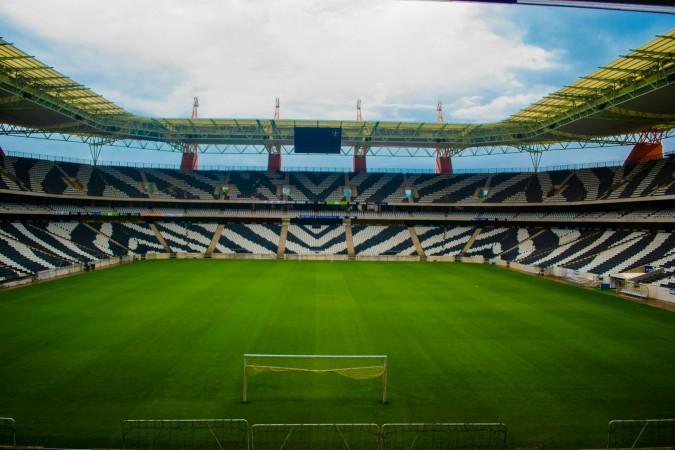
Mbombela Stadium - © Pfano Tshikumbana
Top Attractions in Mbombela
Mbombela offers a variety of attractions that cater to every type of traveler, from nature enthusiasts to history buffs.
Lowveld National Botanical Garden
One of Mbombela’s most serene locations, the Lowveld National Botanical Garden is a sanctuary for plant lovers and nature seekers. This huge garden is filled with lush tropical vegetation, indigenous trees, and breathtaking waterfalls. Walk along its scenic paths and explore various sections dedicated to rare and exotic species. It’s a great spot for relaxation, photography, and learning about South Africa’s diverse flora.
Sudwala Caves
Step back in time by visiting the Sudwala Caves, one of the world's oldest cave systems. These impressive limestone caves offer guided tours that take you deep into their chambers, where you’ll discover fascinating rock formations, ancient fossils, and underground rivers. The caves also host occasional events, such as concerts, thanks to their natural acoustics.
Mbombela Stadium
Built for the 2010 FIFA World Cup, the Mbombela Stadium is a striking piece of architecture inspired by the region’s wildlife. The stadium’s distinctive giraffe-patterned pillars make it one of the most recognizable landmarks in the city. If you’re a sports enthusiast, check the schedule for soccer or rugby matches during your visit. Even without a game, it’s worth a stop to admire the design and enjoy views of the surrounding landscapes.
Kruger National Park
A trip to Mbombela wouldn’t be complete without venturing into the nearby Kruger National Park, one of Africa’s largest and most famous game reserves. Just an hour away from the city, the park offers the chance to spot the Big Five—lion, elephant, buffalo, leopard, and rhinoceros—along with hundreds of other species. Guided safaris, self-drive tours, and luxury lodges ensure every visitor has an unforgettable wildlife experience.
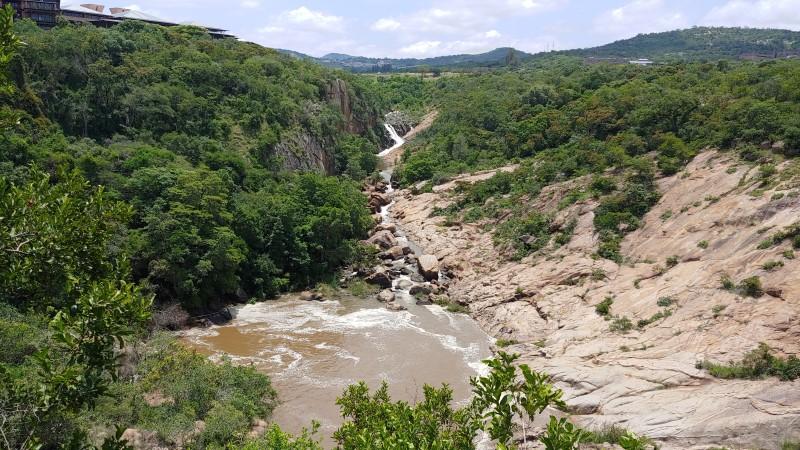
Lowveld National Botanical Garden - © Wikipedia
Must-Try Dishes in Mbombela
Mbombela’s culinary tradition is a delightful mix of traditional South African dishes and local favorites. Exploring the food here allows travelers to experience the rich heritage of South Africa’s cuisine.
- Braai: A South African favorite, braai is an essential culinary experience. Locals gather to grill meats like beef, lamb, and boerewors (a traditional sausage) over an open fire. It's often served with sides like pap (a maize-based porridge) and chakalaka (a spicy vegetable relish).
- Bobotie: Bobotie is a Cape Malay dish made of spiced minced meat, usually beef or lamb, baked with a creamy egg custard topping. It is frequently served with yellow rice, sweet raisins, and chutney to achieve a savory-sweet balance. This dish exemplifies the international influences on South African cuisine.
- Potjiekos: Potjiekos is a traditional South African stew cooked slowly in a three-legged pot over an open fire. The dish typically includes a mix of meat (such as oxtail or chicken), vegetables, and a variety of spices. It’s a hearty and comforting meal enjoyed at gatherings or family events.
- Sosaties: Sosaties are marinated meat skewers, traditionally made with lamb or chicken. They are often grilled during a braai and feature a tangy, sweet flavor from their fruit-based marinades. This dish is commonly served with side salads and rice.
- Malva Pudding: For dessert, malva pudding is a local favorite as this warm, spongy cake is made with apricot jam and served with a generous pour of custard or cream. The rich, sweet flavor makes it a perfect way to end a meal.
- Vetkoek: Vetkoek is a type of fried dough bread, often stuffed with minced meat or served with syrup and butter as a sweet treat. This versatile dish can be enjoyed as a snack, meal, or dessert and is loved for its crunchy exterior and soft inside.
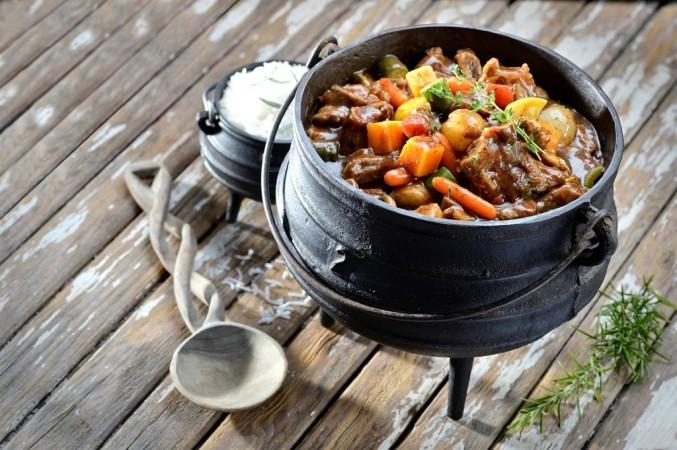
Potjiekos - © African Food Network
Festivals & Local Celebrations
Mbombela is home to a variety of lively festivals and celebrations that showcase the region's rich cultural diversity. From arts and music festivals to traditional Swazi rituals, these events offer travelers a unique glimpse into the heart of local traditions.
Innibos Arts Festival
The Innibos Arts Festival is one of the biggest cultural events in Mbombela, drawing thousands of visitors annually. It celebrates South African arts, music, and theater, featuring live performances, art exhibitions, and food stalls. Held over several days, the festival provides an immersive cultural experience for locals and tourists alike.
Swazi Cultural Festivals
Swazi culture plays a significant role in Mbombela, and traditional Swazi festivals occur throughout the year. These festivals, filled with dancing, singing, and ceremonial rituals, offer a deep dive into Swazi heritage. One such event is Umhlanga (Reed Dance), a traditional Swazi celebration where young women participate in a cultural dance as a tribute to the Swazi King.
Lowveld Air Show
For aviation enthusiasts, the Lowveld Air Show is an annual spectacle not to be missed. Held at the Mbombela Airfield, the event features thrilling aerial displays by military aircraft, helicopters, and stunt planes. It’s a family-friendly event that brings locals and tourists together for a day of excitement.
Mac Mac Cultural Festival
The Mac Mac Cultural Festival is a vibrant celebration of Mbombela's diverse cultural influences, with a focus on the town’s rich mining history. The festival features traditional food stalls, craft markets, live music, and dance performances from various local communities, offering a colorful and engaging experience for visitors.
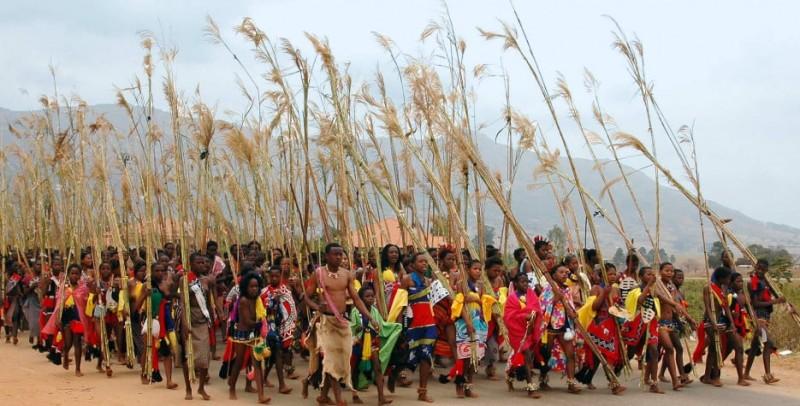
Swazi Cultural Festivals - © Office Holidays
What to Do in Mbombela
- Wildlife Safaris: With its proximity to Kruger National Park, Mbombela is the perfect base for embarking on a safari adventure. Safaris in Mbombela provide a thrilling way to experience South Africa’s iconic biodiversity up close.
- Hiking and Nature Trails: The Kaapsehoop trail, for instance, offers breathtaking views of forests, waterfalls, and even wild horses. For a more relaxed outdoor experience, take a stroll through the Lowveld National Botanical Garden to enjoy indigenous plants and peaceful surroundings.
- Elephant Sanctuary Experience: This experience allows you to interact closely with rescued elephants in a responsible and ethical manner. Guests can participate in activities such as feeding, walking with the elephants, and learning about their behavior and conservation. It’s an educational and heartwarming experience that supports wildlife protection.
- Hot Air Balloon Safari: This unique activity offers breathtaking aerial views of the Lowveld, including the lush vegetation and wildlife below. The serene flight provides a new perspective on the region’s beauty, and many ballooning operators include a celebratory glass of champagne or a light breakfast to complete the experience.
Shopping in Mbombela
- Riverside Mall: Riverside Mall, one of Mbombela's main retail malls, features a mix of local and international brands. Here, visitors can find everything from fashion to electronics, alongside a variety of restaurants and entertainment options.
- Local Craft Markets: For a more authentic shopping experience, local craft markets around Mbombela are perfect for finding handmade items, such as traditional beadwork, pottery, and textiles. These markets give travelers a chance to support local artisans and take home unique keepsakes.
- Casterbridge Lifestyle Centre: Located a short drive from Mbombela, the Casterbridge Lifestyle Centre is a boutique shopping village offering artisanal products, home décor, and specialty shops. The tranquil setting makes it a popular spot for visitors looking for a more relaxed shopping experience.
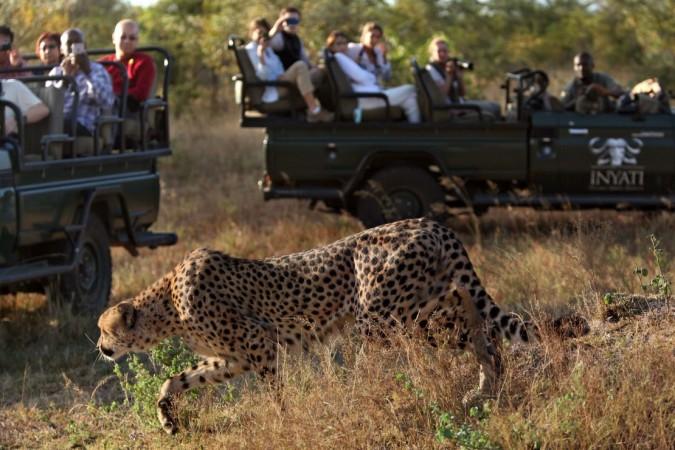
Wildlife Safaris in Kruger National Park - © CNN
Weather in Mbombela: Best Time to Visit
Spring in Mbombela
Spring brings moderate temperatures and lower humidity, with daytime highs between 20°C and 30°C (68°F and 86°F). The pleasant weather is ideal for exploring the city and its natural surroundings. This season is also great for birdwatching, as migratory birds are abundant. Spring is a popular time for travelers seeking mild weather and fewer crowds.
Summer in Mbombela
Summer in Mbombela is characterized by hot, humid conditions with temperatures often exceeding 30°C (86°F). Afternoon thunderstorms are common and provide a temporary break from the heat. This season is very popular with wildlife enthusiasts visiting Kruger National Park, since the thick vegetation allows for superb game watching. However, you should prepare for sudden rain showers and high humidity.
Autumn in Mbombela
Autumn features mild temperatures and gradually cooling conditions, with daytime highs ranging from 20°C to 30°C (68°F to 86°F). The reduced rainfall and comfortable weather make it an excellent time for outdoor activities and sightseeing. Like spring, autumn offers a good opportunity to enjoy the city’s attractions with fewer tourists and lower prices.
Winter in Mbombela
During winter, Mbombela enjoys cooler, drier weather with daytime temperatures ranging from 10°C to 25°C (50°F to 77°F). The crisp, bright weather is great for outdoor activities like hiking and sightseeing. Winter also sees less travelers, making it an ideal time for a more relaxing vacation and lower hotel costs. The nights might be cool, so bring thick clothing.
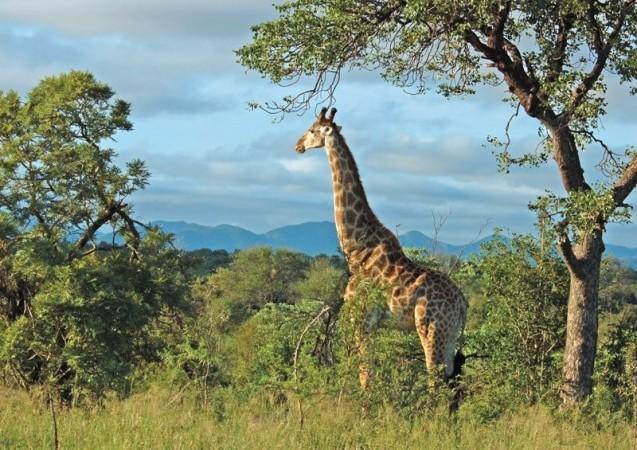
Witness Mbombela's natural beauty at Kruger National Park - © Britannica
Essential Travel Information
Getting Around Mbombela
- Car Rental: Renting a car is an easy way to see Mbombela and its surrounding attractions. Several car rental agencies operate in the city, offering a range of vehicles to suit your needs. Having your own transportation provides flexibility to visit places like Kruger National Park at your own pace.
- Taxis and Ride-Sharing: Taxis are available in Mbombela, but it’s recommended to use reputable companies or ride-sharing apps like Uber for a more reliable and safer option. Ride-sharing services are popular and provide an easy way to get around the city without the hassle of parking.
- Public Transport: Public buses operate within the city and to nearby towns. While not as common as in larger cities, they are a cost-effective way to travel around. Be sure to check the schedules and routes in advance to plan your trips effectively.
ATM & Banking Services
In Mbombela, managing your finances is straightforward with a range of banking services available. ATMs are widely scattered across the city, allowing you to withdraw cash in South African Rand (ZAR) using international cards. Several banks offer comprehensive services, including currency exchange, cash withdrawals, and account management, with branches typically open during standard business hours. Credit and debit cards are accepted at most businesses, but carrying some cash is advisable for smaller transactions or locations that do not accept cards.
Where to Stay in Mbombela
- Luxury Hotels: For those seeking a high-end experience, Mbombela has several luxury lodges and hotels that provide upscale amenities. Expect features such as fine dining, swimming pools, and spa services, offering a comfortable and elegant stay.
- Mid-Range Hotels: If you’re looking for a balance between comfort and affordability, there are numerous mid-range hotels available. These typically offer well-appointed rooms, free Wi-Fi, and convenient locations close to the city’s attractions, making them a practical choice for travelers.
- Guesthouses: For a more personalized experience, consider staying at a guesthouse or bed and breakfast. These options provide a homely atmosphere and often include breakfast, offering a warm and welcoming environment that reflects the local character.
- Budget Lodgings: Travelers on a tight budget will find various affordable accommodations in Mbombela, including hostels and self-catering units. These options offer essential amenities at lower prices, ideal for those looking to save on accommodation costs while still enjoying a comfortable stay.
Des articles pour vous

Voyage à Kampong Cham - Cambodge, Asie
Kampong Cham est une charmante ville riveraine située le long du fleuve Mékong. Connue pour son importance historique et ses attractions culturelles, Kampong Cham offre un mélange d'architecture coloniale, de temples anciens et de paysages pittoresques. Kampong Cham est reliée au district voisin de Tbong Khmum par le pont Kizuna, le premier pont au Cambodge à traverser le fleuve Mékong, en faisant un carrefour de transport crucial pour la région.
Population : Estimation de 80 000 habitants (en 2024)
Économie : Bien que n'étant pas encore une destination touristique majeure, Kampong Cham propose des sites culturels et historiques, tels que le temple Wat Nokor et le pont en bambou de Koh Pen, ainsi que des attractions naturelles comme des forêts et des chutes d'eau. Le gouvernement se concentre sur le développement du tourisme pour améliorer l'économie locale.
Points d'intérêt : Wat Nokor Bachey, Phnom Han Chey, Phnom Pros et Phnom Srey, pont en bambou de Koh Pen, Wat Joy T'maw, Preah Theat Teuk Chha, piste d'atterrissage abandonnée de l'US.

Explorez Nha Trang - Voyage au centre du Vietnam, Asie
Nichée le long de la magnifique côte du Vietnam, Nha Trang se distingue comme une destination de premier choix pour les voyageurs. Cette ville côtière, réputée pour ses superbes plages et sa vie marine foisonnante, s'adresse à tous. Nha Trang vous accueille à bras ouverts, que vous recherchiez des aventures, de la culture ou de la détente au bord de la mer. Ce guide vous fera découvrir les points forts de cet endroit magnifique, facilitant ainsi la planification de votre voyage de manière fluide et excitante.
Population : Environ 423 000 habitants en 2019.
Économie : L'un des principaux centres touristiques du Vietnam et la plus grande économie de la province de Khanh Hoa.
Sites emblématiques : Célèbre pour les tours Cham de Po Nagar, la cathédrale de Nha Trang et l'île Hon Mun.

Voyage à Sihanoukville - Cambodge, Asie
Sihanoukville, une ville côtière du sud-ouest du Cambodge, est la capitale de la province de Preah Sihanouk. Située sur une péninsule le long du golfe de Thaïlande, la ville est bien reliée à Phnom Penh par des autoroutes principales et dispose d'un aéroport international.
La ville abrite le seul port en eau profonde du Cambodge, jouant un rôle crucial dans la logistique et le commerce du pays. Les plages magnifiques de Sihanoukville, telles qu'Ochheuteal et Serendipity, attirent aussi bien les touristes nationaux qu'internationaux. Le développement économique a prospéré ces dernières années, en particulier grâce à la création de la Zone économique spéciale de Sihanoukville (SSEZ) et aux investissements chinois dans les casinos, l'immobilier et les stations balnéaires. La ville offre également des attractions naturelles telles que le parc national de Ream et plusieurs îles voisines, en faisant une destination variée pour les voyageurs d'affaires et de loisirs.
Population : La population de Sihanoukville était d'environ 160 000 habitants en 2024.
Économie : Sihanoukville, une ville côtière en pleine croissance au Cambodge, se distingue par son mélange dynamique de développement économique et de tourisme. La Zone économique spéciale de Sihanoukville (SSEZ) est devenue un pôle industriel majeur, abritant plus de 180 entreprises et créant des milliers d'emplois. Avec le seul port en eau profonde du Cambodge, la ville joue un rôle clé dans le commerce et la logistique du pays. Bien qu'elle se soit transformée d'une petite ville balnéaire tranquille en un centre urbain animé, Sihanoukville reste célèbre pour ses plages immaculées, attirant des touristes tout au long de l'année. Les investissements chinois importants ont alimenté la croissance des hôtels, des casinos et de l'immobilier, faisant de la ville un centre d'opportunités économiques et d'hospitalité.
Monuments : Plage d'Otres, Plage d'Ochheuteal, Plage de l'Indépendance, Parc national de Ream, Chute d'eau de Kbal Chhay, Monument des Lions d'Or, Wat Leu.

Explorez Kharkhorin - Voyage en Mongolie, Asie
Bienvenue à Kharkhorin, un trésor historique niché au cœur de la Mongolie. Ancienne capitale vibrante de l'Empire Mongol sous le légendaire Gengis Khan, Kharkhorin se dresse comme un témoignage de la riche culture et de l'histoire de la Mongolie. Cette ville antique possède une combinaison unique d'importance historique et de paysages époustouflants, en faisant une destination incontournable pour un voyage de rêve en Mongolie. En mettant le pied à Kharkhorin, vous ferez un saut dans le temps, à une époque de grands palais, de routes commerciales prospères et d'échanges culturels sans pareils. Que vous soyez intrigué par les ruines anciennes, désireux d'explorer les traditions locales ou simplement en quête d'une immersion dans la beauté naturelle de la Mongolie, Kharkhorin a quelque chose à offrir à chacun.
Population : Environ 1 000 habitants en 2020.
Économie : L'une des attractions touristiques les plus importantes de la Mongolie et l'ancienne capitale de l'Empire Mongol.
Monuments : Célèbre pour les Ruines de Kharkhorin, le Monastère d'Erdene Zuu, et la Vallée d'Orkhon, un site du patrimoine mondial de l'UNESCO.

Explore Luang Prabang - Laos Travel, Asia
Luang Prabang, nestled in northern Laos at the meeting point of the Mekong river and Nam Khan river, is a city celebrated for its rich cultural heritage and stunning natural beauty. Recognized as a UNESCO World Heritage Site in 1995, it boasts a unique blend of traditional Lao and French architecture that has been carefully preserved. Whether you're wandering through its ancient temples, admiring the local architecture, or soaking in the natural beauty of waterfalls and rivers, Luang Prabang offers something for everyone.
Population: Approximately 470,000 in 2020.
Economy: Luang Prabang's economy thrives on tourism, with its UNESCO status drawing visitors to its temples, natural wonders, and cultural experiences. Local crafts, hospitality, and small businesses also play vital roles, supporting the town's sustainable growth. Local crafts, hospitality, and small businesses also play vital roles, supporting the town's sustainable growth.
Landmarks: Famous for the Wat Xieng Thong, Royal Palace Museum (also known as Haw Kham), and Mount Phousi (Phou Si Hill).Luang Prabang, nestled in northern Laos at the meeting point of the Mekong river and Nam Khan river, is a city celebrated for its rich cultural heritage and stunning natural beauty. Recognized as a UNESCO World Heritage Site in 1995, it boasts a unique blend of traditional Lao and French architecture that has been carefully preserved. Whether you're wandering through its ancient temples, admiring the local architecture, or soaking in the natural beauty of waterfalls and rivers, Luang Prabang offers something for everyone.
Population: Approximately 470,000 in 2020.
Economy: Luang Prabang's economy thrives on tourism, with its UNESCO status drawing visitors to its temples, natural wonders, and cultural experiences. Local crafts, hospitality, and small businesses also play vital roles, supporting the town's sustainable growth. Local crafts, hospitality, and small businesses also play vital roles, supporting the town's sustainable growth.
Landmarks: Famous for the Wat Xieng Thong, Royal Palace Museum (also known as Haw Kham), and Mount Phousi (Phou Si Hill).

Explore Vientiane - Laos Travel, Asia
Vientiane, the capital of Laos, offers a unique travel experience for those looking to explore a peaceful Southeast Asian city with a deep connection to its cultural roots. Unlike other bustling capitals, Vientiane boasts a serene and laid-back atmosphere, making it a perfect destination for travelers wanting to escape the chaos of more crowded cities. This charming city sits along the Mekong River, offering scenic views, rich history, and a vibrant yet tranquil way of life. As a gateway to exploring Laos, this capital invites you to slow down, immerse in its heritage, and enjoy the local flavors.
Population: Approximately 840,000 in 2023.
Economy: Vientiane's economy is growing steadily, driven by government services, trade, and tourism. Key sectors include agriculture, manufacturing, and construction. The city's strategic location along the Mekong River supports trade with neighboring Thailand and Vietnam.
Landmarks: Famous for the Pha That Luang, Patuxai, and the Buddha Park (or Wat Xieng Khuan).
